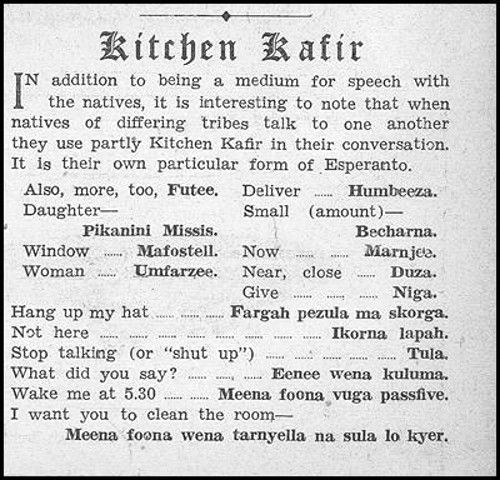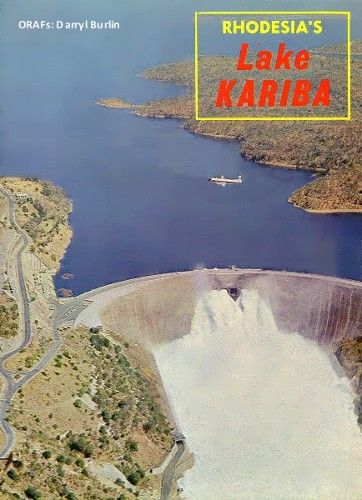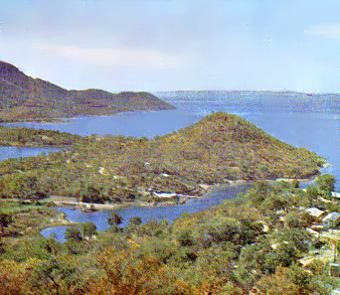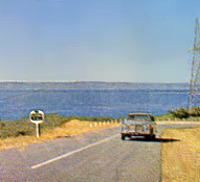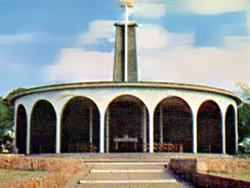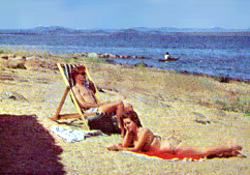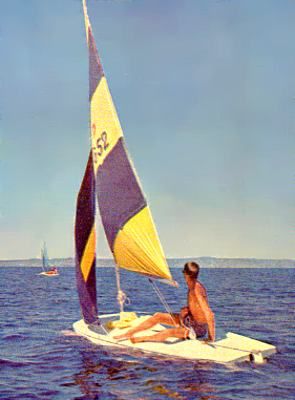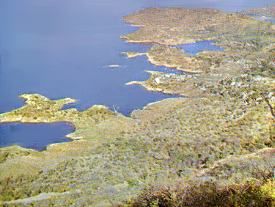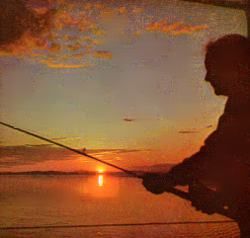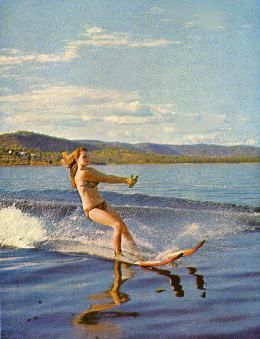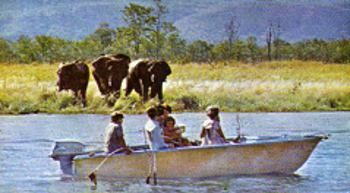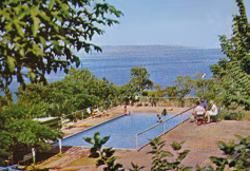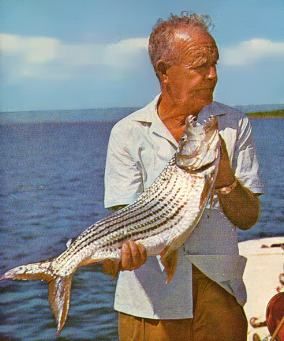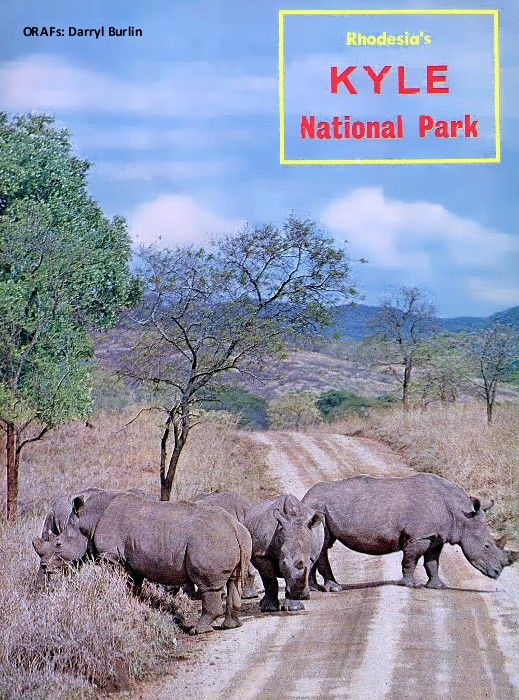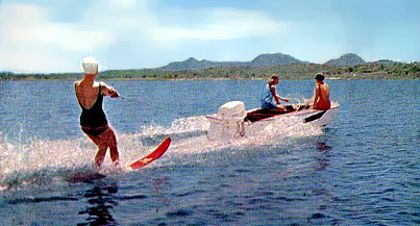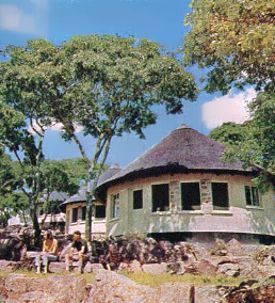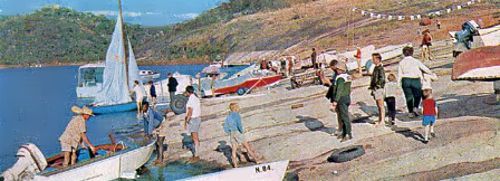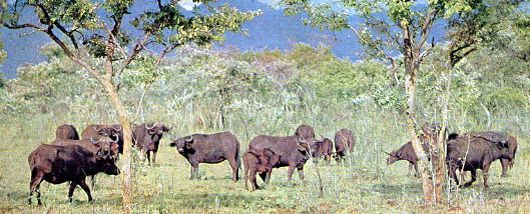Victoria Falls
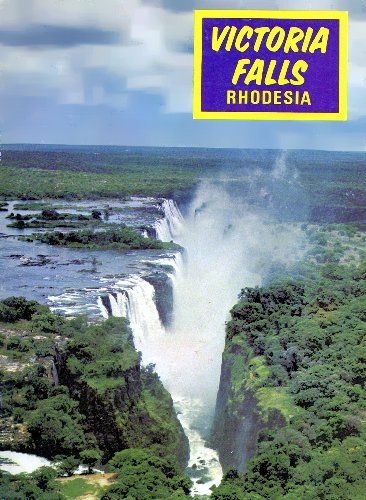
Victoria Fails is the tourist magnet of Africa. The reasons are not hard to find. The mile-wide curtain of water plunging more than 300 ft. into the gorge beneath is one of the treasured natural wonders of the world.
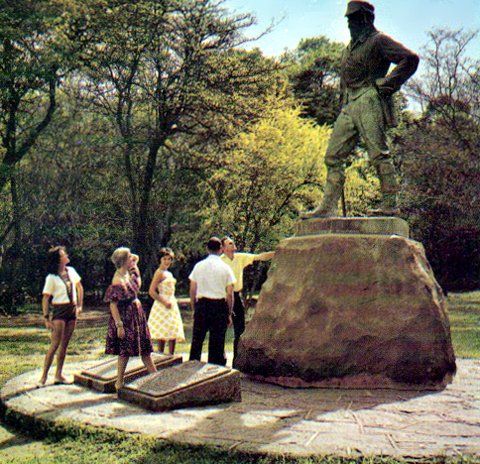
The brave missionary-explorer, Dr. David Livingstone, having heard his Africans talk of mosi-oa-tunya (the Smoke that Thunders) or of chvngwc (the Place of the Rainbow), came down-river to the Falls on November 16, 1855, to see for himself and to proclaim their existence to men at large. A statue of him stands on the bank overlooking the Devil's Cataract. Today the Falls are almost exactly as Livingstone first saw them, unspoilt in all their grandeur. Nothing has been allowed to mar the natural beauty of the surroundings: even the disfiguring precaution of guard-rails has not been permitted.
As Livingstone stood, lost in wonder, so do many thousands of visitors each year. And in the hotels and rest camps they can relax in modern comfort, making the Victoria Falls truly an international meeting place.
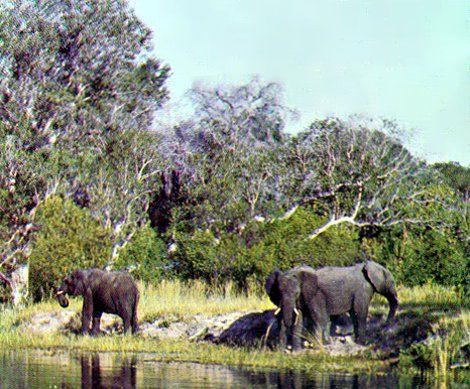
During the dry summer months, June to November, the visitor can see elephant and other game within a few miles of the village, for the Falls is the focal point of a 230-square-mile National Park, which spreads some 35 miles along the Rhodesian bank of the Zambezi.
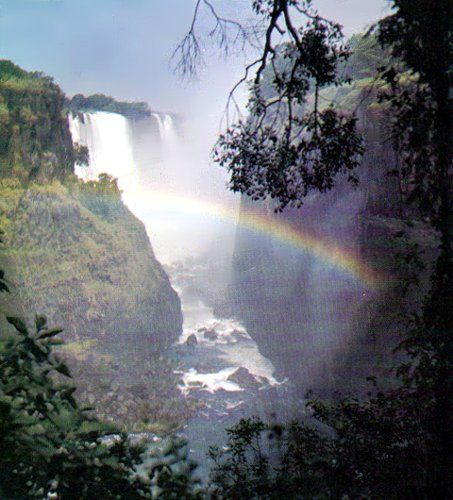
A chain-assisted path (known as the Chain Walk), descending one-third of the way down the side of the gorge, enables the visitor to see the final plunge of the Devil's Cataract and, along the full length of the gorge, a vista of the rest of the Falls.
Archaeological evidence indicates that the Falls area has been inhabited for many thousands of years, but the present inhabitants—the Tonga people—probably moved from Kasai, in what is now the Congo Republic, no more than 500 years ago. Little of their tradition and culture goes back any further than the time of David Livingstone.
 Nevertheless, much tribal craft derives from the wealth of timber in the region, such as Rhodesian mahogany, ebony and teak, and a softwood from the Featherweight tree. A variety of carvings and many other curios may be obtained from well-stocked shops in the village.
Nevertheless, much tribal craft derives from the wealth of timber in the region, such as Rhodesian mahogany, ebony and teak, and a softwood from the Featherweight tree. A variety of carvings and many other curios may be obtained from well-stocked shops in the village. From Johannesburg, Bulawayo, Salisbury, Kariba and Wankie, more than 21 flights a week serve the new airport 15 miles south of the Falls. Visitors from the north come via Livingstone Airport, nine miles north of the Falls, in Zambia. All-inclusive Flame Lily holidays starting from most centres in Southern Africa are on sale all over the world.
From Johannesburg, Bulawayo, Salisbury, Kariba and Wankie, more than 21 flights a week serve the new airport 15 miles south of the Falls. Visitors from the north come via Livingstone Airport, nine miles north of the Falls, in Zambia. All-inclusive Flame Lily holidays starting from most centres in Southern Africa are on sale all over the world.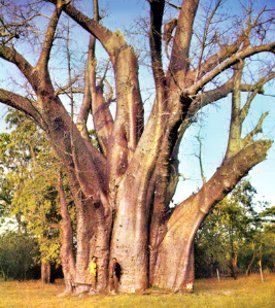
From Livingstone's statue there is a path and roadway up-river to the Big Tree, a huge baobab almost 67 ft. in circumference at its base but reduced in height by a storm in 1960.

The modern, luxurious Casino Hotel was opened in 1966. It is air-conditioned throughout and has a large conference room, a bank, hairdressing salon, jewellery and other shops for the convenience of its patrons, besides a la carte restaurant serving breakfast 24 hours a day, for the convenience of patrons of the casino hall.
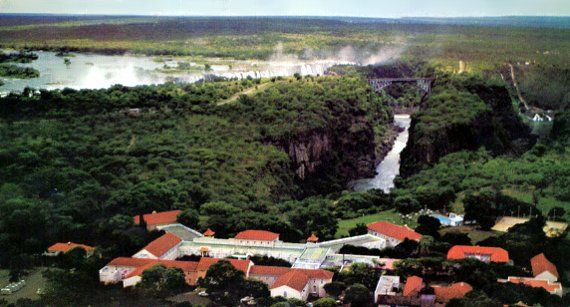
The famous colonial-style Victoria Falls Hotel, with its 120 bedrooms, also has a bank, hairdressing salon and shops, as well as a conference room. Air Rhodesia and United Touring Company (offering cars for hire) have offices there. Many visitors come by rail, and there are all-inclusive Rainbow tours (by rail) from all centres in Rhodesia.
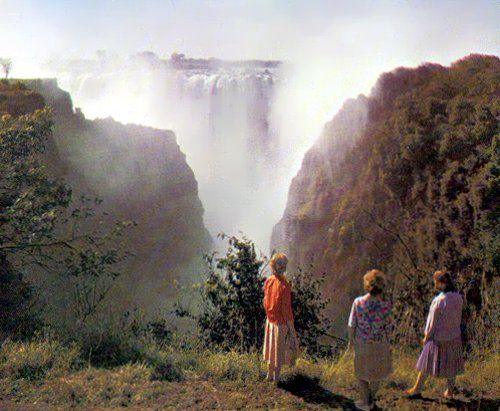
The 1860-yard crest of the Falls is divided into five separate waterfalls—the Devil's Cataract, Main Falls, Horseshoe Falls, Rainbow Falls and Eastern Cataract. The fastest- and deepest-running water goes over the Devil's Cataract, next to the Rhodesian bank. The mean height of the Falls is 304 ft. The second major curtain of water, the Rainbow Falls, is the highest (355 ft.).
When crossing from Rhodesia into Zambia the visitor must pass through full border formalities on both sides.
From the road can be seen the gap where the river continues its way below the Falls, Between Danger Point on the Rhodesian side and the less accessible opposing promontory called the Knife Edge, swirl the turbulent waters of the Boiling Pot.

Both hotels have swimming-pools. The one at the Casino has underwater lighting and is set amongst lawns Mopane trees. The Falls Hotel has tennis courts and a refreshment kiosk alongside a pool which commands fine views of the Second and Third gorges.
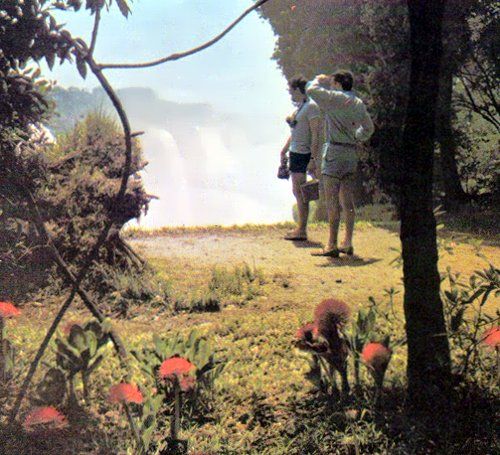
Opposite the western half of the Falls and for almost three-quarters of their length, a footpath passes through the Rain Forest, a dense tree-jungle nurtured by the incessant spray of the Falls. The floor of the Rain Forest is covered in November by masses of red Haemanthus filiflorus and the path gives access to a series of remarkable head-on views of the torrent from relatively few yards' distance.
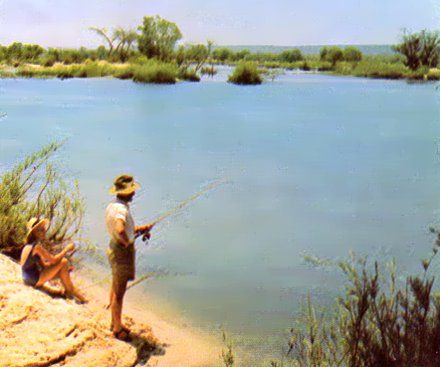
Tiger fish and bream give anglers good sport ail the year round in the Zambezi, and a licence is not required. Designated fishing-spots and a fenced fishing-camp opposite Kandahar Island have been provided along the Zambezi Drive.
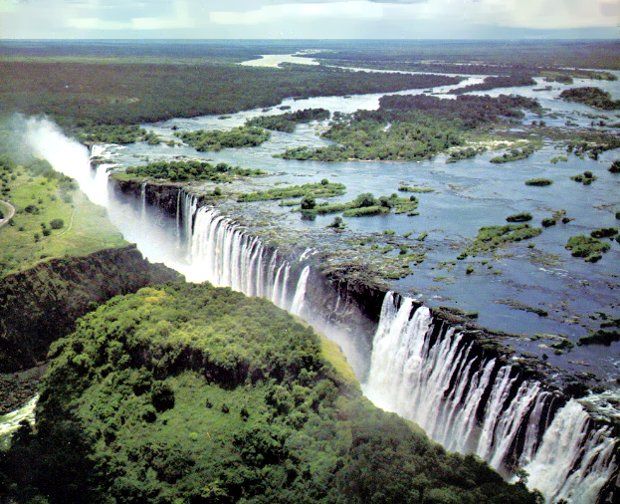
Near the hotels a replica of a 19th Century Matabele village has been created. It is open to visitors throughout the week and craftsmen can be seen making the various implement and curios which are on sale.
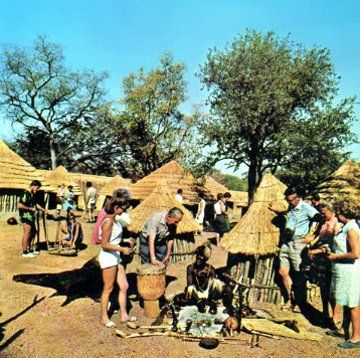
Near the hotels a replica of a 19th Century Matabele village has been created. It is open to visitors throughout the week and craftsmen can be seen making the various implement and curios which are on sale.
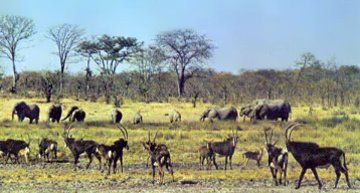
The National Park has fine herds of the national animal— the princely Sable antelope—which is relatively rare in other parts of Africa. Other animals easily seen include buffalo, kudu, water-buck, bush-buck, impala and warthog.
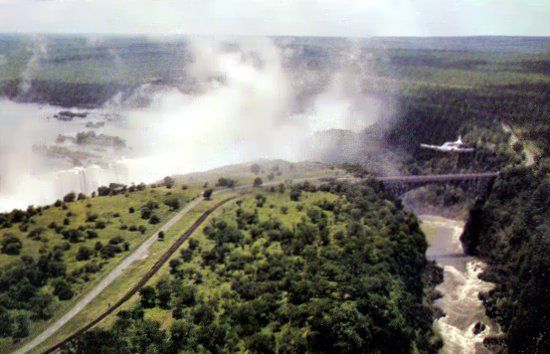
To be appreciated fully, the Falls should also be seen from the air. Several air-excursions by Rhodesia United Air Carriers are available, and reservations can be made at either of the hotels. Described by most passengers as the highlight of their visit is the Zambezi Sky Safari. This is a flight of more than 200 miles over country teeming with game. The route is westerly to Botswana, then returning along the course of the Zambezi, and culminating in several circuits over the Falls. The flight affords unique opportunities for the photographing of wild animals, very often in herds of hundreds. The 219-yard road/rail bridge was built, at the direction of Cecil Rhodes, at a point where the spray would fall upon it. It is 310 ft. above the gorge at high water.
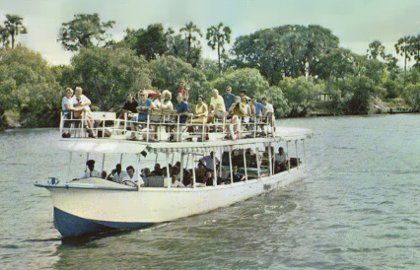
A launch trip on one of Africa's loveliest rivers for a picnic tea on Kandahar Island is a rewarding
experience. Hippo are invariably seen, and sometimes crocodile.
In the dry months of July to November, elephants and other game may be spotted on land or in the river.
The bird life is of never-ending interest. The launch operators' offices in the village arrange transport
to the landing-stages two miles up-river of the Falls.
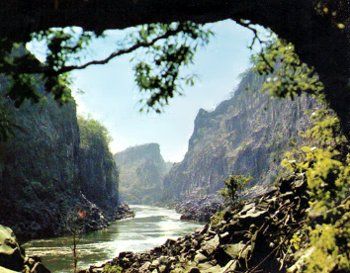
For many people the gorges through which the Zambezi flows for many miles downstream have a
fascination almost as great as that of the Falls themselves- There are eight such gorges, and good viewpoints exist for nearly all of them. Numerous walks may be taken to see the gorges. From the hotels, pathways lead to the Second and Third gorges and provide fine vantage-points. On the road from Bulawayo, and two miles before reaching the Falls village, a drive to the crest of a hill offers a panoramic view both of the gorges and the Falls,

The most impressive stretch of the Falls, and certainly the most photographed, is the majestic 800-yard-wide Main Falls, which lies between Cataract Island and Livingstone Island. The usual flow of water over the whole of the Falls in April is 75 million gallons per minute and, although diminishing in October, the flow at that time is still considerable. Conditions are thus ideal for sight-seeing from the Rain Forest, for visitors do not get drenched by the spray. There are also clearer views for photography when the flow is below maximum.
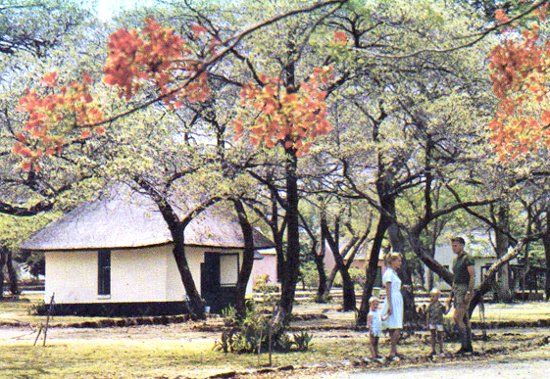
There are two well-equipped rest camps. Four miles upstream is the Zambezi Camp, which consists of 20 self-contained luxury lodges ranged along the river bank, in secluded surroundings. In the village more than 30 chalets are set amongst pleasant gardens and colourful shady trees. There is a caravan park at the chalets, and a site for camping. Only a few minutes walk away are the licensed Sprayview Restaurant and a small shopping centre. The National Parks' Reception Office contains an Information Bureau.
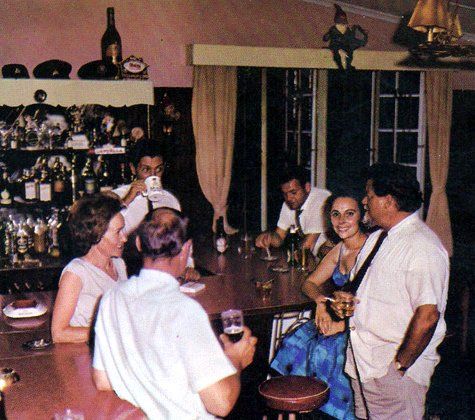
Those requiring further information should write to:
The Warden, Victoria Falls National Park
P.O. Victoria Falls, Rhodesia.
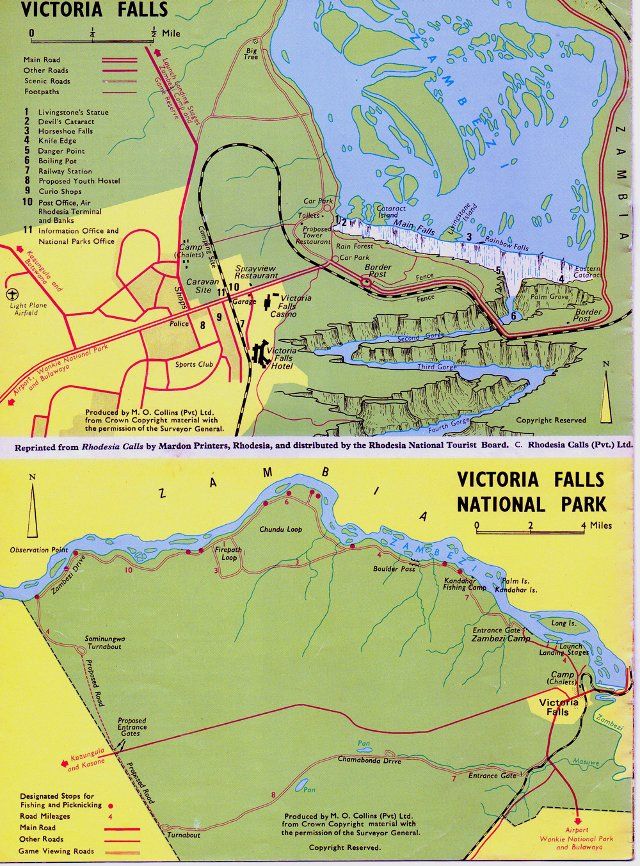
Reprinted from Rhodesia Calls by Mardon Printers, Rhodesia and distributed by the National Tourist Board. C. Rhodesia Calls (Pvt) Ltd.
End
Extracted and recompiled, by Eddy Norris, from material made available by Darryl Burlin, and for use on Our Rhodesian Heritage that ORAFs administers.
Thanks to Darryl.
Comments are welcome, please enter them below or mail them to ORAFs and they will be uploaded to this article
To view the Blog Home Page - Please Click Here.
(Please visit our previous posts and archives)
Labels: Darryl Burlin, Rhodesia, Victoria Falls
